CONTENTS
What Can You Take On A Plane
What can you take on a plane? This is a question we've all grappled with at least once in a lifetime. Picture this: you get truly excited about your long-awaited trip, and then comes the "what can I bring on a plane" moment.
There are certain TSA rules for carry-ons any traveller should be aware of, like how much liquid can enter the cabin. Or, is it fine for your must-have travel items, like your favourite razor or healing candles, to go on board?
This post will cover very much anything you need to know about carry-on packing so you can go through the security smoother and faster. It’s time to brush up on the latest TSA rules and jet off with more confidence.
What Is Allowed In Your Carry-On Bag?
Liquids
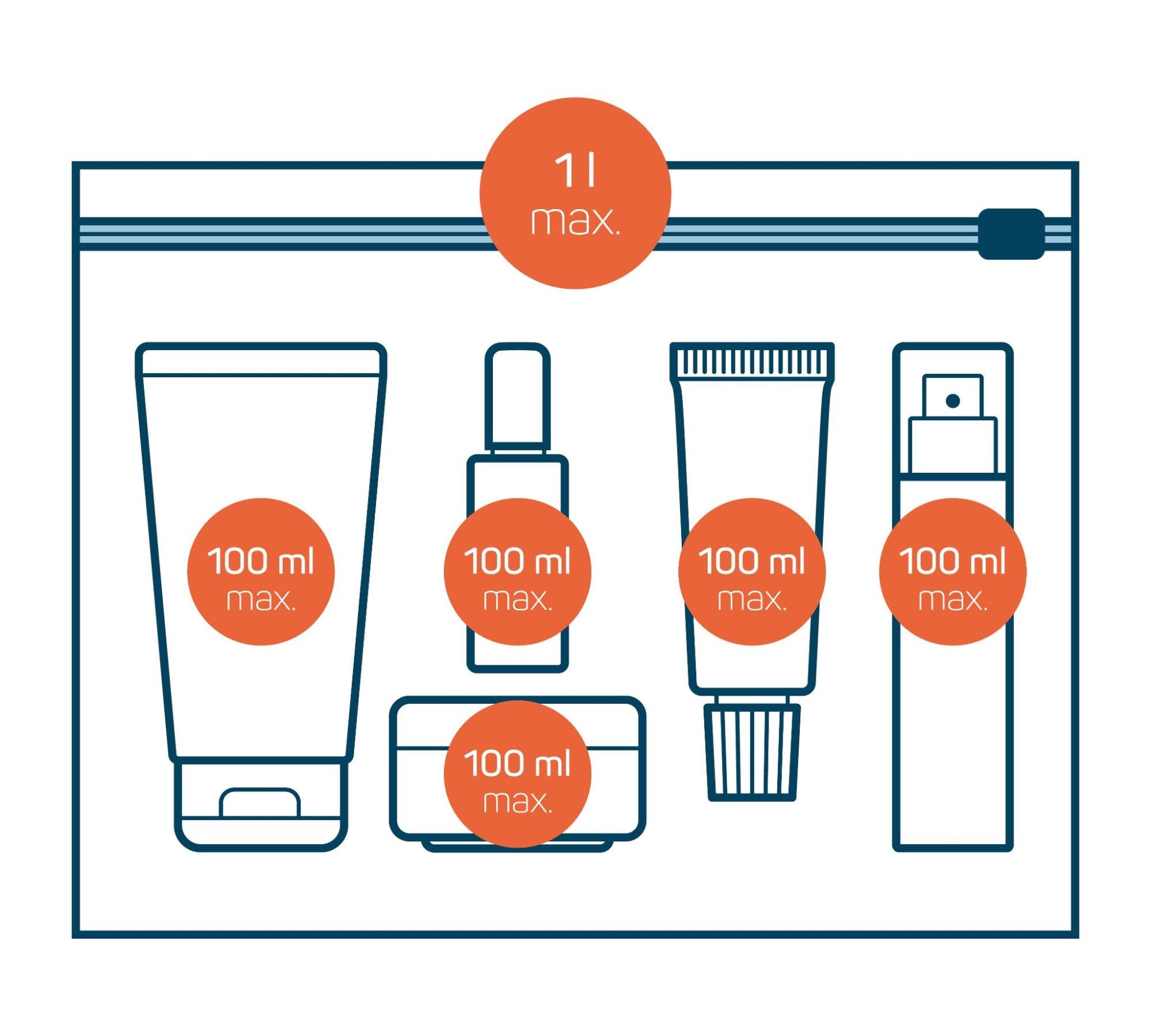
Know the liquid rules and there won't be any delays at the TSA checkpoint. Photo by Nevada31 - stock.adobe.com
What size liquid can you take on a plane? How much shampoo can you slip into your toiletry bag? What size toothpaste can you take on a plane? We can't deny that the liquid rule creeps into many aspects of packing, and it's hard to ignore it.
Even when you’re not a regular flyer, chances are you’ve heard about the 3-1-1 rule somewhere sometimes. The requirement to put non-flammable liquids into a 3.4-ounce container has been around for nearly two decades.
According to explosive experts, with such an amount, anyone with wicked intentions won’t be able to use liquid explosives to take the plane down. If you plan to bring some liquids onboard, let’s have a look at how to do it right:
- (3) You should limit the liquids, gels, aerosols, pastes, creams, etc., to under 3.4 ounces (or 100 millilitres) in your carry-ons.
- (1) All of these liquids should go into one single, clear quart-size bag.
- (1) Each passenger can only bring one quart-size bag as a carry-on. If you wish to fly with more liquids, you must pack them into your checked-in bags.
Medication
Anyone with medical needs can carry a “reasonable" amount of liquid medication onboard. By this we mean you can take more than 3.4 ounces of medicines, provided that you notice TSA officials in advance. For medication in pill and solid forms, there are no restrictions on how much you can bring in your handbag as long as it safely passes the screening.
Foods & Snacks
Take home any tasty souvenirs for your loved ones. Just make sure you get familiar with TSA rules first before stashing them into your carry-on.
Technically speaking, you can fly with most food as a carry-on. It is the amount of food that is restricted. Simply put, there are two categories of food you can take note of—solid foods and those possibly falling into the “liquid” type.
What TSA views as solid foods can breeze through the checkpoint as a carry-on. Generally, you can take these items onto the plane with you:
- Hard cheese
- Cooked meats and seafood
- Dried goods like liquid-free gains, pasta, beans
- Dried fruits
- Bread
- Fresh eggs
- Small snacks: Hardened chocolate and confectionery candies, nuts, bars, popcorn, crackers, cookies, and the like.
Liquid foods: Pay close attention to the amount you bring, as these foodstuffs must strictly comply with the TSA’s liquid rules.
To go as carry-on luggage, these foods should be less than 3.4 ounces, and you should pack them in the same way you would with liquid. Whenever in doubt, you can always check them in the hold or ship them home.
- Canned food
- Liquid chocolate
- Creamy cheeses
- Gravy
- Jams, spreads, and dips
- Honey, syrup
- Vinegar, oils
- Ice cream
- Jams and jellies
- Sauces, hummus
- Soups
- Salsas
- Salad dressings
- Yoghurt.
Exception:
Think twice about packing raw vegetables, fruits, seeds, meat, dairy, fish and animal products as they are prohibited due to risks of invasive plant pests and diseases. For instance, if you travel from the US (outside the EU) to the UK, you can’t bring any meat or meat products on board.
Food-packing tip: Whatever you pack, be courteous when bringing and packing food onboard. Consider leaving anything pungent at home. If you have to bring them anyway, pack them with the utmost care to not disturb your fellow passengers.
Baby Food
What can you take on a plane if you're an on-the-go parent with a newborn? TSA policies are more generous regarding baby food. If you're flying with a baby, you can bring breast milk, baby formula, baby juice, and sterilised water.
All items can exceed the limit of 3.4 ounces but need to be packed in a separate bag for security screening.
If so, how many ounces can you take on a plane? The TSA doesn't specify the legal limit. Yet, they do state that parents can bring a “reasonable” amount, which means that it's enough to keep their baby well-fed during the flight.
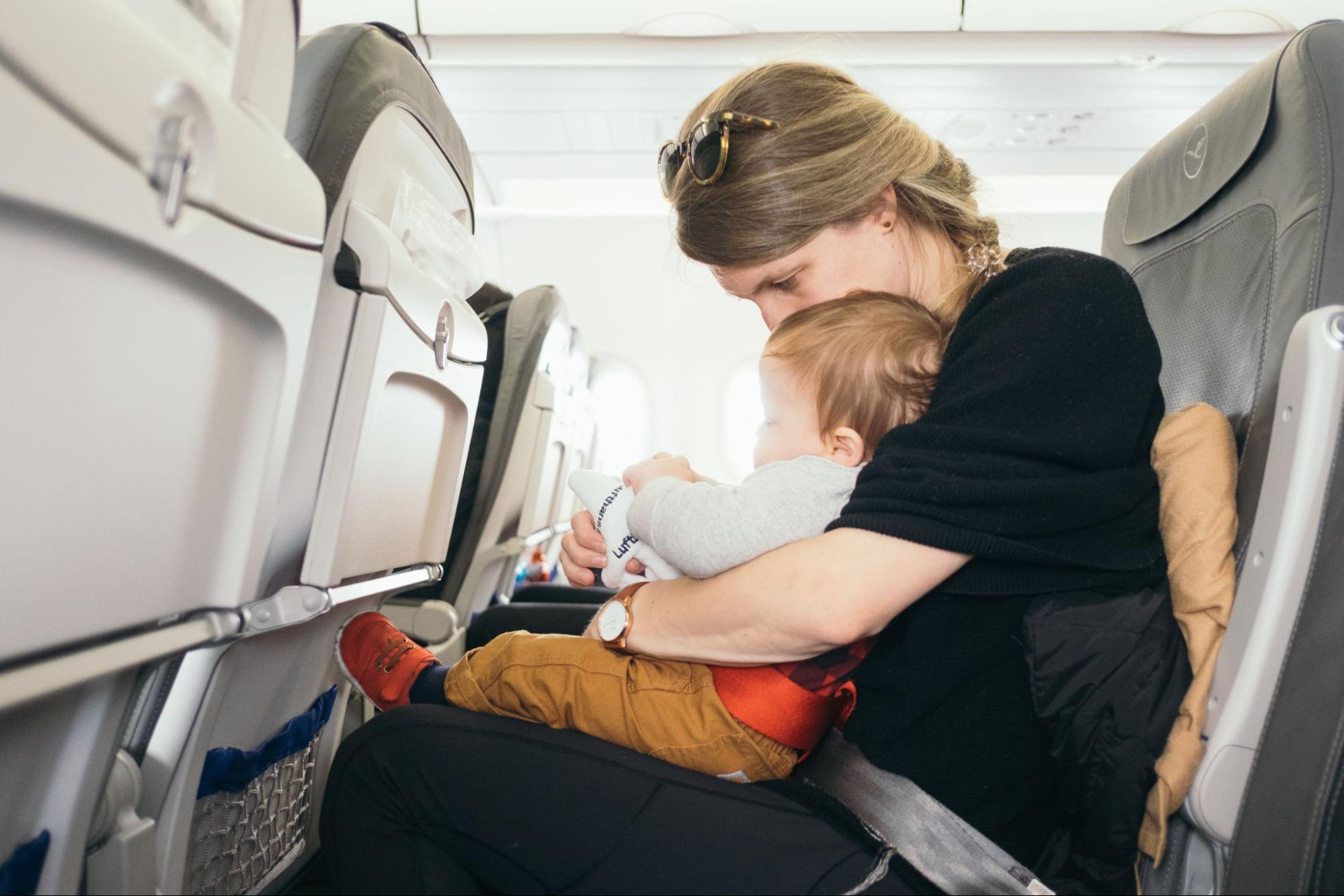
Don't worry about liquid limits if you travel with a baby. Photo By Paul Hanaoka on Unsplash
Accessories accompanying these foodstuffs, like ice or freezer packs, are also permissible onboard most aircraft.
One important note: Ice packs that keep the milk cold should be frozen solid when entering the security checkpoint. Otherwise, they will be treated as liquid and subject to 3-1-1 rules.
To ensure the smoothest journey through security, you should keep any liquid in a bag easily visible to the gate crew (for the sake of security screening). If you prefer your infant's food/milk not to be X-rayed, also inform the TSA to get alternative clearing approaches.
Cosmetic Products
Many makeup items are liquid-based, so you should pack them with the 3-1-1 rules in mind. These products are cleared for carry-ons as long as they’re less than 3.4 ounces and with proper packing. Here are common cosmetic items the TSA crew will treat as liquid:
- Liquid eyeliner
- Foundation
- Concealer
- Mascara
- Makeup remover
- Nail polish
- Nail polish remover
- Hairspray
- Hair gel
- Aerosol hair texturiser
- Perfume.
You can bring any amount of makeup items in solid or powder form, such as blush or eyeshadow. However, be extra prepared if they’re larger than 12 ounces (350 litres). The TSA inspector will ask you to place them in a separate bin for screening.
You can freely bring as much as you wish on the plane for hairbrushes, makeup wipes, lipsticks and lip balms.
Deodorant
If you want to stuff deodorant in your hand baggage, check the type you’re bringing first. Stick deodorants can fly on board in any size.
Gel, spray, cream, liquid, and roll-on deodorants all count as liquid. So, in this case, what size deodorant can you take on a plane? 3.4 ounces is a solid answer, and remember to slip them into your quart-size bag.
Razors
Replacement blades/cartridges, disposable razors, and electric razors are all safe grooming items you can bring on board.
However, straight and safety razors should always be in your checked bags, as they're way more dangerous. Pack the handles only if you still want to slip them into your hand luggage. The sharp blades still need to be removed and placed in the checked bag.
Matches and Lighters
You can travel with one book of safety matches, but strike-anywhere types are not allowed to fly with. How about lighters, another common source of fire? Is it safe to bring them on the plane?
Disposable and zippo lighters are permissible on planes in your carry-on bags. For the safety of your flights, you can only bring only 1 lighter with you. If your smoking cravings strike, remember that there’s no smoking allowed on the plane.
Most importantly (and confusingly enough), you must keep the lighter on your body (e.g. in your pocket) after screening, so don’t return it to your hand luggage.
- For disposable and Zippo lighters without fuel, you can check them in the hold as well, but there are special instructions you should follow.
- Cigarettes have more leeway. You can put them either in your carry-on, checked bags, or on your body. But there’s still a limit on how much you can bring on a plane.
Electronics
To avoid rough handling in the cargo hold, feel free to bring your laptop on the plane.
Of all your favourite tech gizmos, what can you bring on a plane? As a rule of thumb, you should always pack your laptops, e-readers, tablets, digital cameras, and cell phones as carry-on.
These electronics, however, can mess with the X-ray scanners, so TSA typically asks you to place them in a separate bin while screening. Anything larger than a smartphone, like a gaming console, should follow this rule.
If you want to speed up the process, pack them in an accessible spot in your backpack (like an quick-access front pocket). It's easier to pull your gadgets out to check this way.
Batteries & Portable Chargers
According to the Federal Aviation Administration (FDA), most personal devices with lithium metal or lithium-ion batteries should only be put in your carry-on.
Due to the fear of catching fire, lithium batteries are a big no in checked luggage. After all, rough handling or potential temperature changes in the hold can lead to overheating and explosions.
However, these power chargers or power banks are fine to fly with you in your hand baggage. There’s a voltage limit to these handy travel accessories, however. You can only take those with up to 100 watt hours per battery. This is not a stingy number, as 100 watts already can provide enough juice for your devices.
The rules apply to more than just loose batteries. If your power banks and portable chargers have lithium-ion batteries, they should be in your hand baggage, too.
Hand Tools

If you fly with hand tools, remember there are size restrictions in place for carry-ons. Photo By Polesie Toys on Pexels
If you need some hand tools for your projects abroad, you can still fly with them as carry-ons.
- The TSA generally accepts small tools with clear purposes, such as wrenches, pliers, screwdrivers, tape measures, wire cutters, etc. These objects shouldn’t be over 7 inches, or you’ll have to check them in the hold.
- Pill cutters, nail cutters, small scissors, and tweezers can also go into your carry-on luggage. Just make sure they are 4 inches or shorter from the pivot point. It’s also courteous on your part to cover the sharp edges to prevent injury to TSA staff.
- Wine lovers or sommeliers travelling for work can carry their trusted corkscrews as long as the blade is removed. But remember, don't pop open your favourite booze, even when you're in a celebratory mood. You can only drink what the flight attendant serves, after all.
E-vaping devices
Vaping devices, like vaporisers, vape pens, or e-cigs, normally go as carry-on items only. You can also keep them in your body if you want to.
Due to the safety risks they pose, TSA doesn't allow them to go into the hold, however. The crew wants it to be somewhere they can see, smell, and, of course, easily control if there's any fire. And the cargo hold will be the last choice.
The amount of the e-liquid or vape juice should be less than 3.4 ounces, or you’ll break the liquid rules. Like boarding with electronics, the lithium-ion battery of your vaping devices should be under 100 Wh. If they're lithium metal batteries, two grams are the carry-on cap.
Knitting Needles
You won't have trouble bringing knitting needles and needlepoints through the TSA, as they are allowed items. Yet, beware that any knitting gear with sharp blades, like circular thread cutters, should go into your checked bags.
Fishing Rods
Good news if you’re heading for your next angling vacation: fishing poles can be a carry-on or checked item. But here’s the catch: airlines may have their maximum lengths of fishing poles.
In other words, fishing poles can’t go onboard if they can’t sit snugly in the overhead cabin. Some carriers are more straightforward and consider fishing rods as checked hand luggage only.
For example, British Airways does not allow fishing rods in hand baggage, as they typically exceed the airline's 56 cm limit. The TSA considers accompanying details like sharp hooks potentially dangerous, so you better check them.
What Is Not Allowed On A Plane Carry-On?
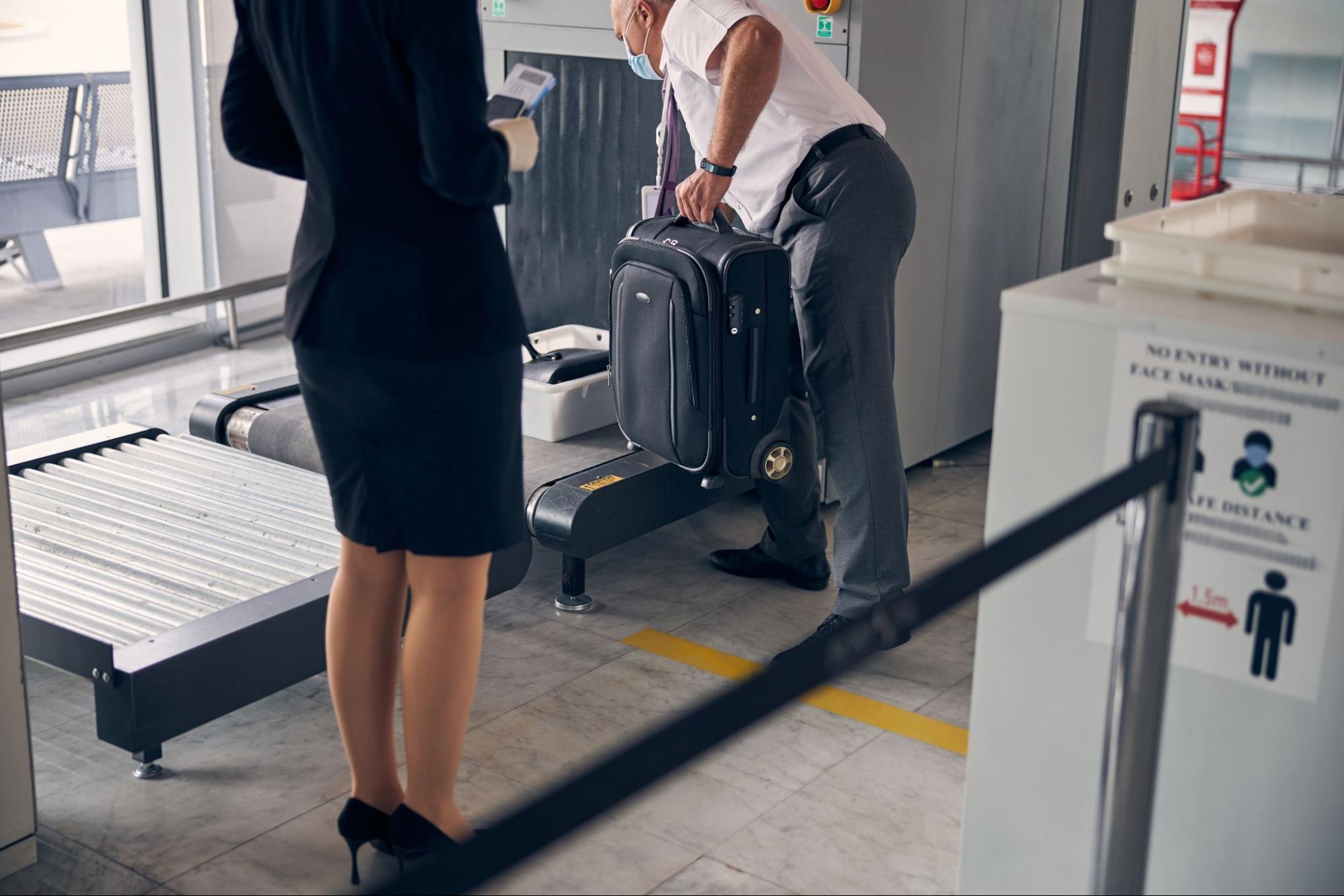
Checking sharp items will give you (and your fellow passengers) peace of mind. Photo By Viacheslav Yakobchuk - stock.adobe.com
Weapons
For obvious reasons, weapons and self-defence items are no-fly items on most aeroplanes. We think this is not a redundant reminder at all, as thousands of firearms still get caught at the checkpoint every year.
To breeze through the security gate, check your carry-on and ensure it doesn’t contain any prohibited items. This includes (but is not limited to) ammunition, batons, stun guns, and pocket knives.
Also, leave these self-defence devices at home: pepper spray, mace, blackjacks, brass knuckles, cat eyes, etc. Items that can potentially be used to hurt someone are no exception. For instance, a brolly with a sharp point end may be denied onboard.
Sharp objects
It's common sense not to pack sharp objects as carry-ons, or you create trouble for yourself at the security gate. Knives (including pocket knives), saws, sabres, blades, and meat cleaves are not allowed as carry-on items.
As mentioned above, scissors smaller than 4 inches are good for flying in your handbag. For anything larger, you should find it at the baggage claim.
Explosives and flammable items
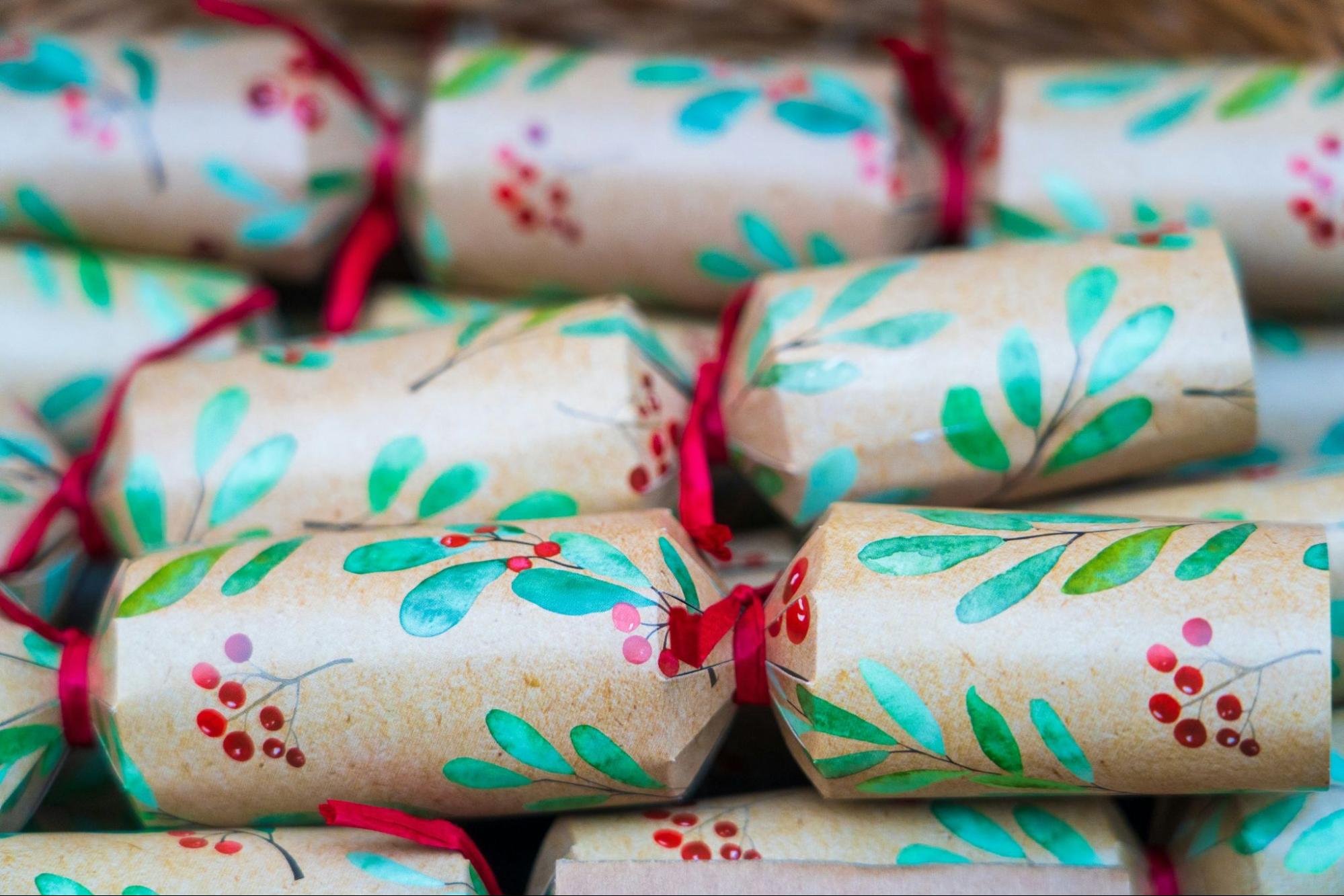
Don't pack any sparklers; even Christmas crackers are a no-no. Photo by Nick Fewings on Unsplash
As a common carry-on contraband - explosives and flammable substances pose high safety risks. We believe that no one feels at ease knowing that they’re flying with them.
So, never attempt to bring such things as fireworks, grenades, dynamite, blasting caps, flares, and their replicas, either in your checked or hand baggage.
Certain Sporting Equipment
You can bring many sporting items on board the plane, but there are a few exceptions. The most obvious contraband is a martial arts weapon, but it’s generally accepted as checked bags.
Sports equipment you can use as a bludgeon, such as baseball bats and clubs, can't go into the cabin and should be checked into the hold. So be mindful of what you pack if you have a match or tournament abroad.
Why is it rare to see someone with bowling pins on board? You should know that the airline also considers them a bludgeoning item. Bowling balls, however, are safe either in checked or handbags.
Other sporting gear that most airlines will prohibit are cricket bats, hockey, walking sticks and lacrosse sticks. Large and sharp hooks are also potentially dangerous, so the TSA advises passengers to pack them as checked items as well.
Certain Medical and Assistive Devices
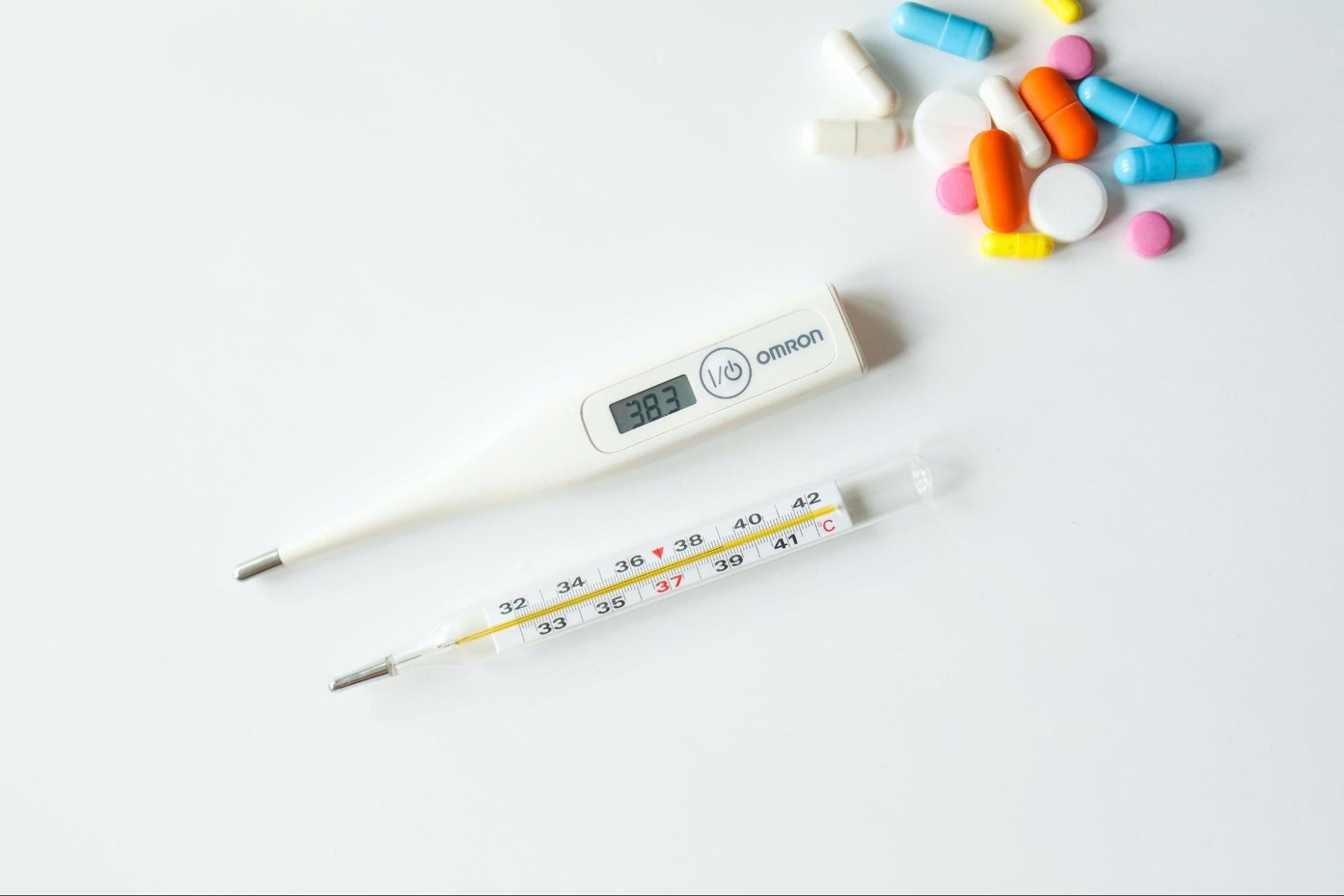
You can always buy a new mercury thermometer once you land, after all. Photo By Polina Tankilevitch on Pexels
Medical supplies normally get a “boarding pass”, as long as they smoothly go through the screening. However, flyers cannot take battery-powered wheelchairs and mobility devices on board. If you’re flying with them, check them in the cargo compartment. The same rule also applies to mercury thermometers and gel heating pads.
Alcohol over 140 proof
Planning to bring back some drinks from your holiday? As long as your liquids are not stronger than 70 per cent, you can freely bring them on board. Otherwise, you can't fly with your bottles, even as carry-on or checked bags. There's no way to bypass this rule, even when you decant your booze into different tiny bottles.
Gel-type Candles
Common wax candles can be carried on most flights, but how about a gel-like type? TSA policies are quite straightforward, as any gel-like candle will need to go in checked baggage.
Cast-Iron Cookware
Are you a cook who can't fly without your prized cookware? Pots and pans can glide through the TSA with ease, whether in your carry-on or checked luggage.
But you cannot slip cast-iron skillets or pans in your hand baggage. TSA considers them potentially dangerous items, especially when used as weapons.
Items That Surprisingly Can Go In Your Carry-on
Antler
Good news for antler hunters who want to bring a unique souvenir home. As long as your antlers can fit underneath the seat or the cabin overhead, you can always carry them on the plane.
Wrapped Gifts
Thinking of bringing back some souvenirs for your friends? We're all for it. But the first step is to make sure your gifts don't fall into the prohibited categories of TSA before you plan (and pay) further.
Even when your gifts comply with the carry-on rules, the TSA officer might still unwrap them if they raise a red flag. This means that you’d better wrap your presents once you land to not waste any time and money.
Small pets

Yes, you can take home a live fish as a cool holiday keepsake. Photo By Frank Barning on Pexels
If you’re a pet parent, you can always travel with your dogs, birds, and cats. But did you know that pet fish are cleared for takeoff by the TSA, too?
You should pack your live fish, live lobsters or even live corals in a clear container. The amount of liquid you need to keep your aquatic buddies alive can be bigger than 3.4 ounces.
Be prepared, as the TSA officer will inspect your live pets by hand, so don't send them through the scanner.
Snow Globe
Taking a snow globe home for your kids this holiday? Choose the one that contains less than 3.4 ounces of liquid (remember the 3-1-1 liquid rule?). Most importantly, the entire item, including the base, must easily fit in the quart-size bag. For a rough estimation, your Magic Kingdom should be as small as a tennis ball.
What Happens To Confiscated Items?
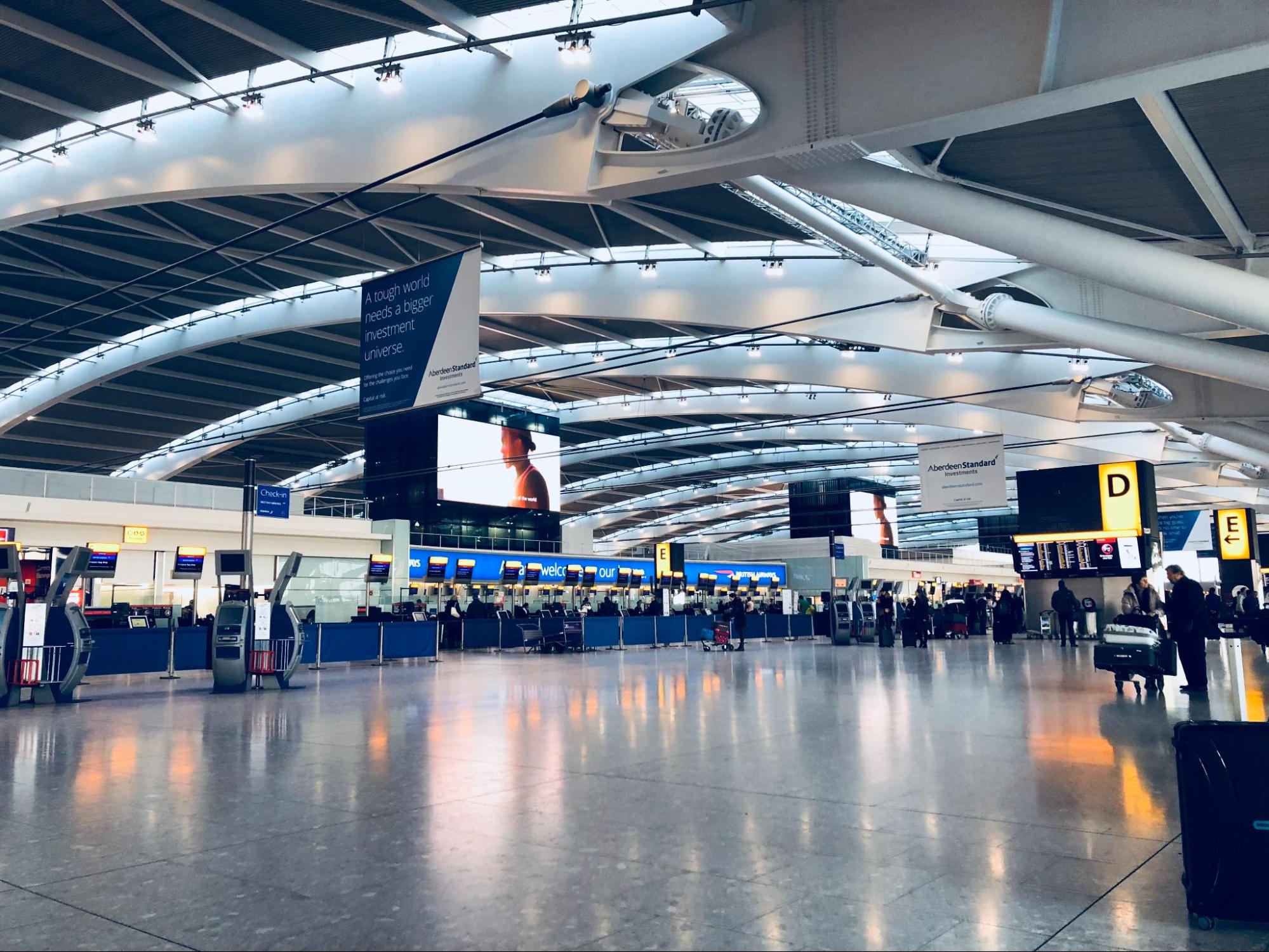
You're not likely to have your belongings back once they’re confiscated. Photo by Belinda Fewings on Unsplash
No matter what you want to travel with, you don't want to lose your belongings halfway. But, chances are you mistakenly packed something prohibited for the flight.
Then, if an item gets confiscated, can you have it back? The answer is no. Anything falling into the TSA's hands can have one of these fates: donated, tossed out, or sold.
TSA will normally throw liquid products away (this includes shampoos, shower gels and other hair care chemicals. After all, it requires too much hassle (and money) to check if they've been tampered with. So, tossing them is the obvious choice.
Some items can be transported to the state surplus centres. Then, the centres will auction them online, normally on Govdeals, and the profits will go into the State’s budget.
Other illegal items, like drugs, weapons, and hazardous substances, will be handled by the local authority. For any useful item, the TSA will donate to organisations that need it.
Take What You Need In Your Carry-on Hassle-free With CabinZero Classic 28L
Skip the stress of baggage claim or lugging around your suitcase with CabinZero 28L. With only 15.4 x 11.6 x 7.9 inches in size, our backpack is carry-on size compliant for most airlines. This means that it keeps your hands free for greater mobility. Most importantly, you’ll never lose your luggage during transit again (and if you do, it is easier to find it again, thanks to the Okoban tracking tag).
Designed for true travellers, 28L has a spacious main compartment that lays open like a clam shell. So, packing it is almost like packing a suitcase when you can easily access what’s inside. Whether it’s a work trip, a weekend getaway, or a decent hike, you’ll have enough room for your must-haves (and never have to worry about overpacking).
This backpack is incredibly lightweight (600g), so it won't add up much to the weight your back must carry day in and day out. There’s also the easy-to-engage compression straps to boot. You can always shrink the loads to make the pack fit the sizers effortlessly once you’ve done packing.
Of course, things can grow heavier if the backpack is completely filled. That's why the air-flow shoulder straps are part of the plan. These straps make you feel extra supportive and comfy even when walking for a long time.
CabinZero Classic 28L doesn’t have a lot of frills, but it is as functional and reliable as it comes. The handles on the top and the side make it easier to lift the backpack into the aircraft’s overhead bin. You can also use the side handle to switch up your carrying style whenever your back grows tired.
Minimalistic, functional, and spacious - CabinZero 28L is built to be a great in-flight companion. It will take you from your city adventure to camping explorations, with everything you need and nothing you don’t. Shop one now to enjoy the best hassle-free travel has to offer.
Let’s Pack The Right Items On Your Next Flight
Preparing for a flight can get the anxiety flowing, especially when thinking about the TSA line. Yet, it is also something that you can completely control, as long as you know what should and shouldn’t be in your carry-ons.
Once you know “what can you take on a plane”, we bet that you can always breeze through the checkpoint and boarding gate. Packing is also a learn-by-doing process, and with each flight, you’re sure to get better at refining your checklist of carry-on essentials.
Kesley


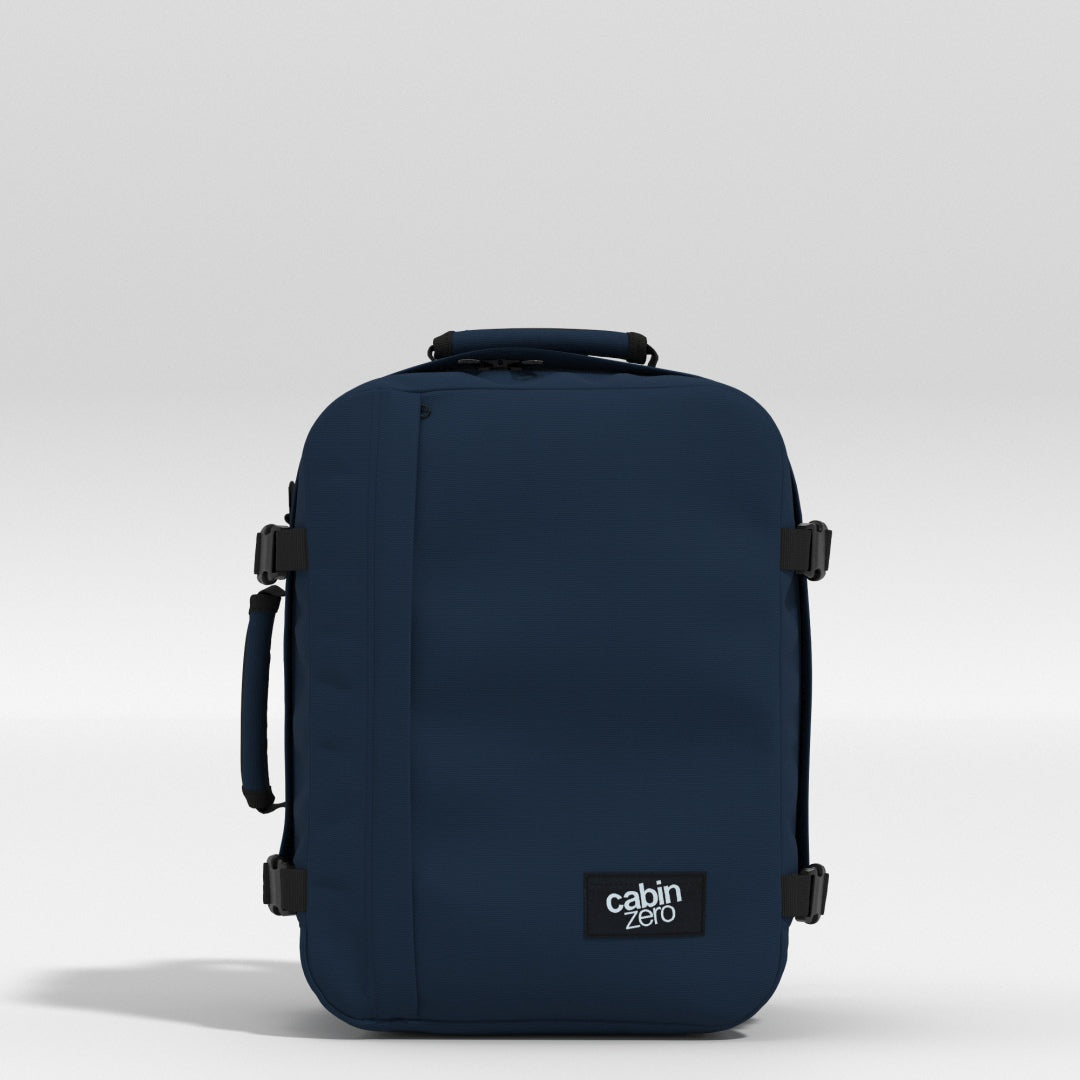

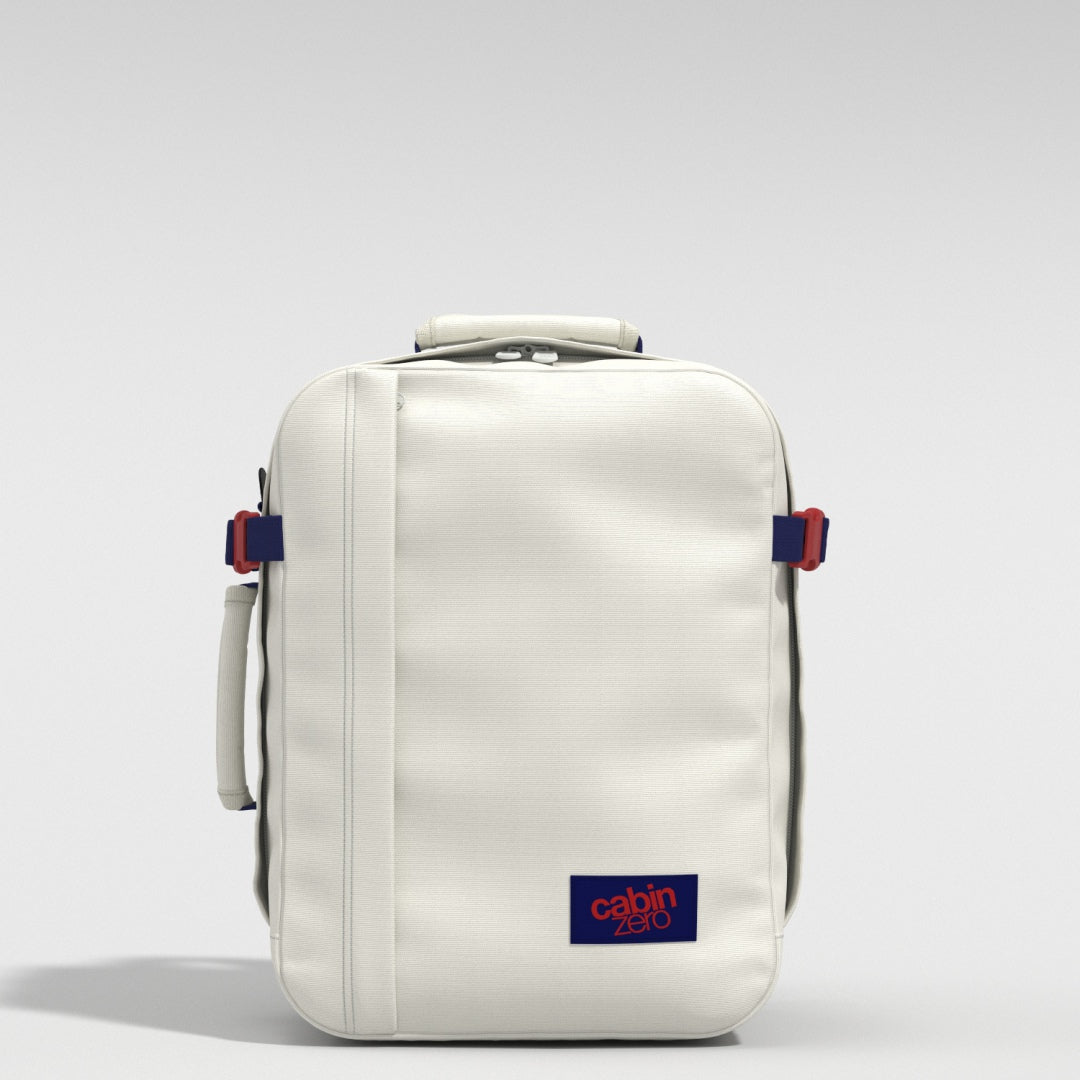

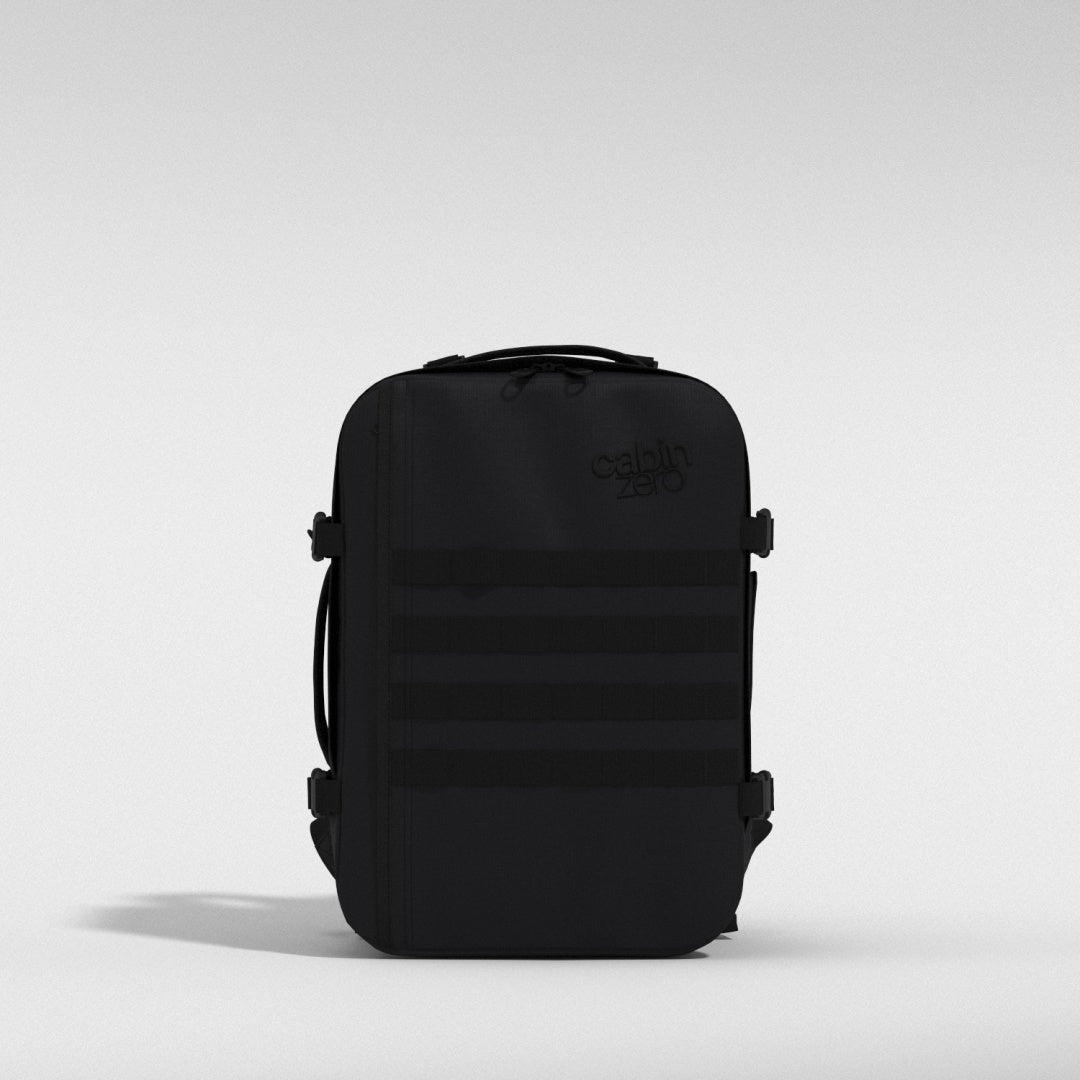

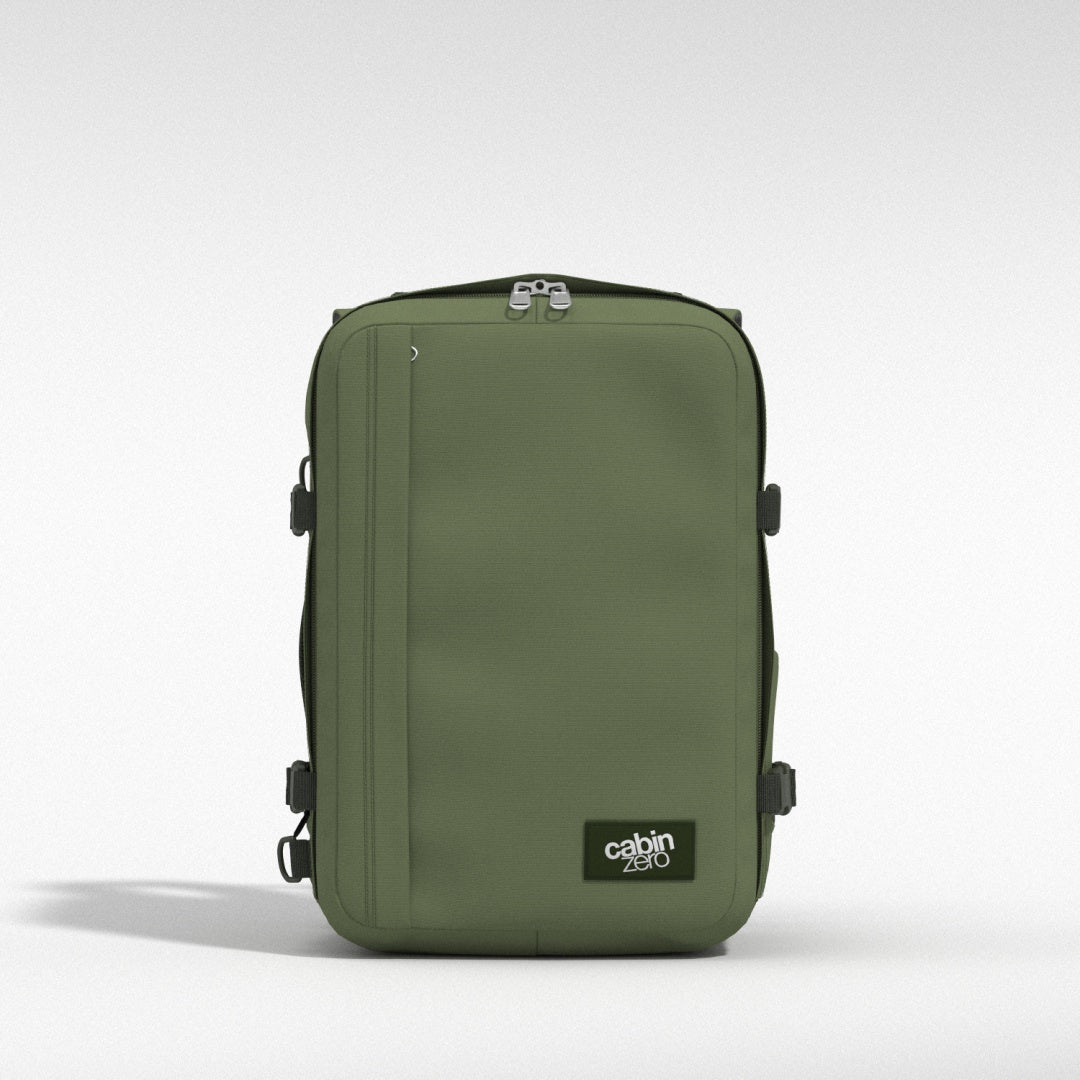

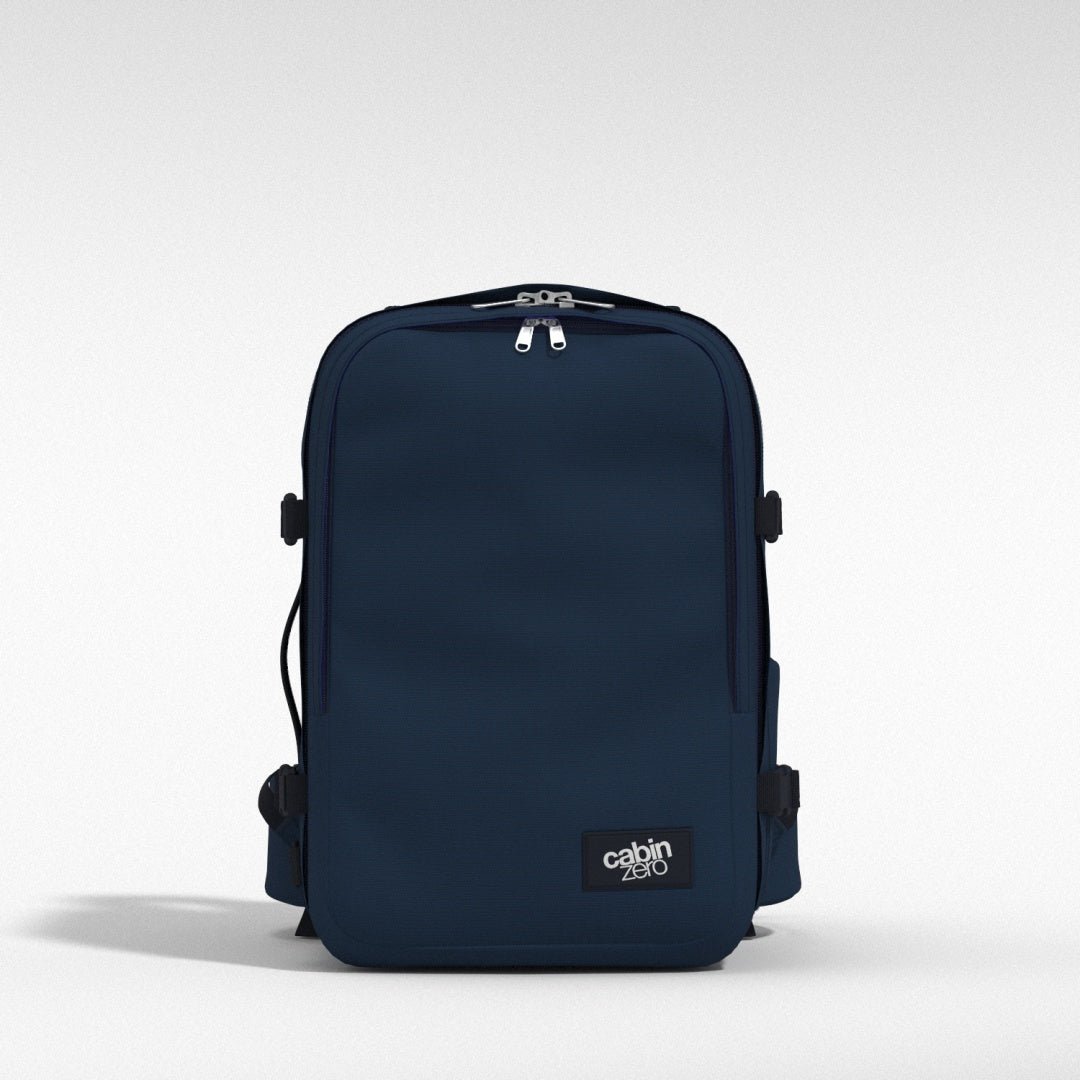










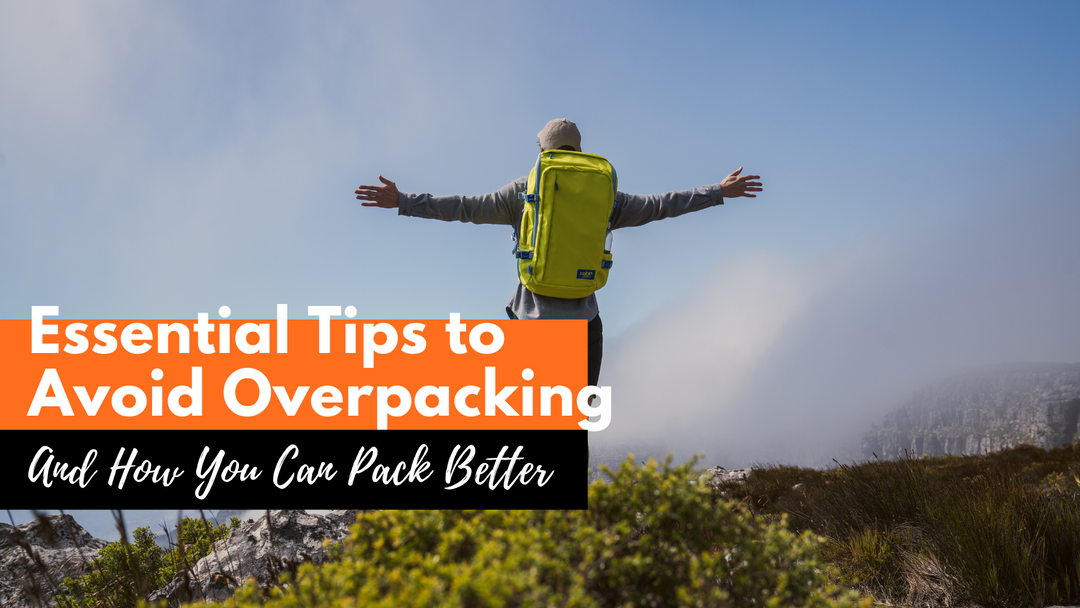
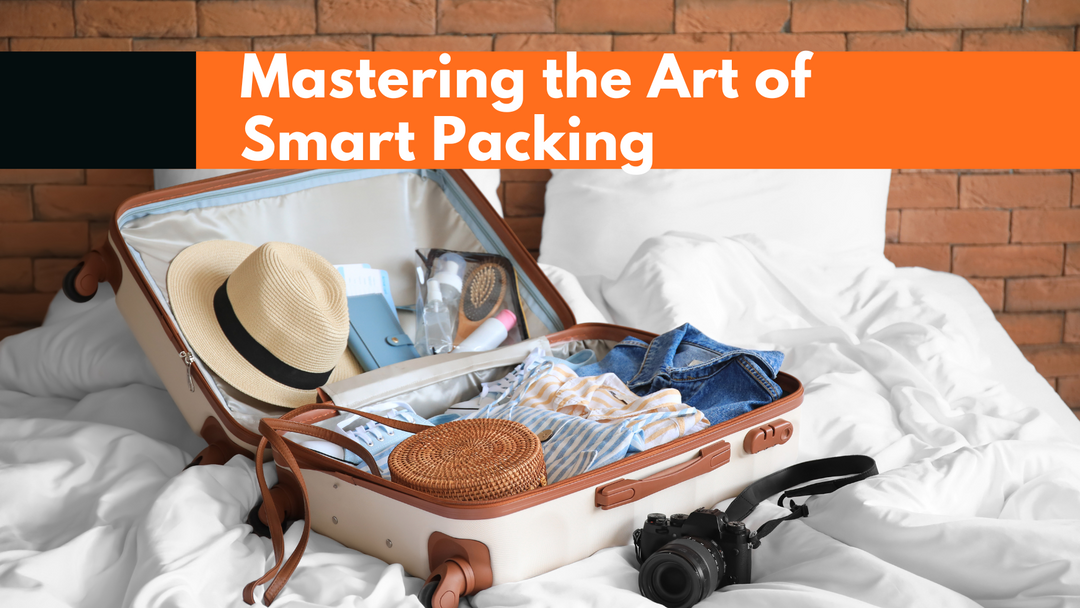
Hinterlasse einen Kommentar